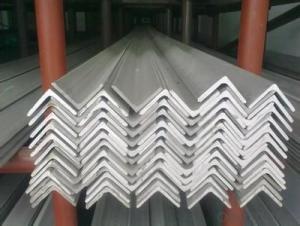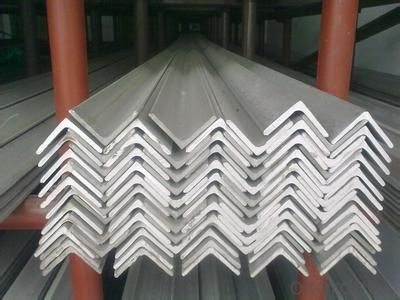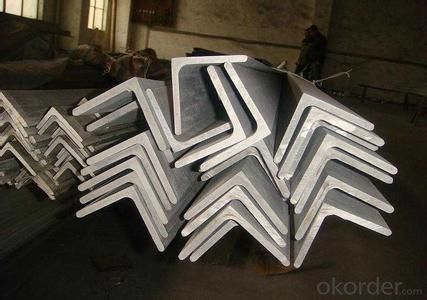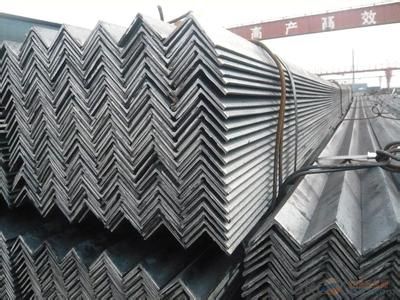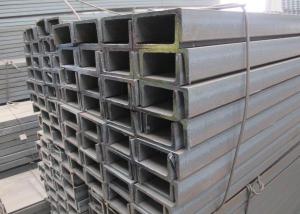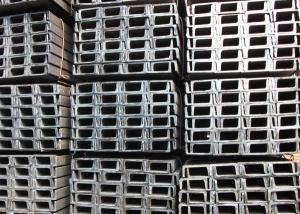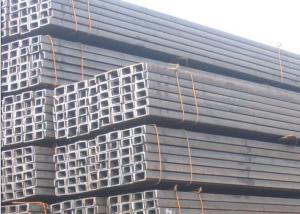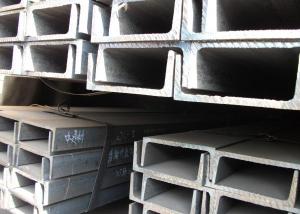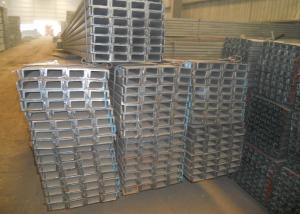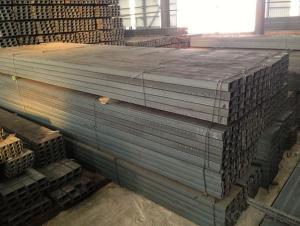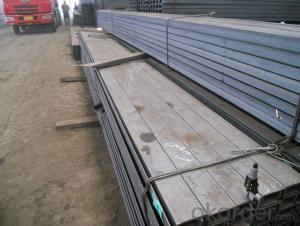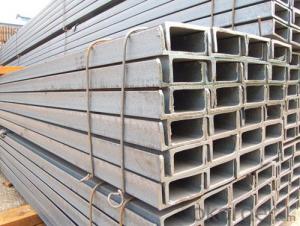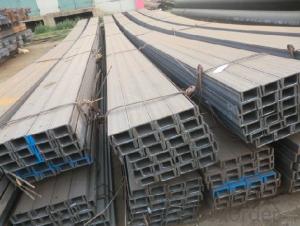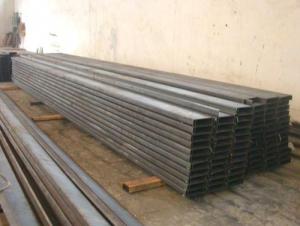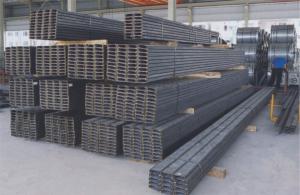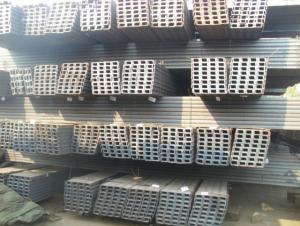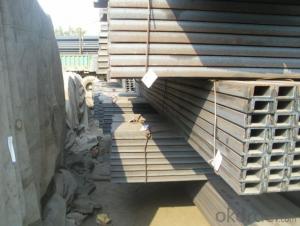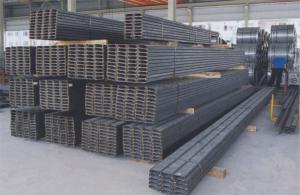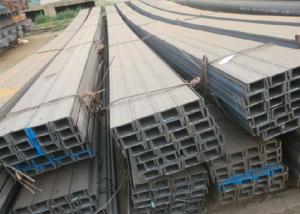Steel JIS U Channel Or UPN Or GB U Channel
- Loading Port:
- Tianjin
- Payment Terms:
- TT OR LC
- Min Order Qty:
- 25 m.t.
- Supply Capability:
- 20000000 m.t./month
OKorder Service Pledge
OKorder Financial Service
You Might Also Like
Specification
Product Description:
OKorder is offering high quality Hot Rolled Steel I-Beams at great prices with worldwide shipping. Our supplier is a world-class manufacturer of steel, with our products utilized the world over. OKorder annually supplies products to European, North American and Asian markets. We provide quotations within 24 hours of receiving an inquiry and guarantee competitive prices.
Product Applications:
According to the needs of different structures, Angle can compose to different force support component, and also can be the connections between components. It is widely used in various building structures and engineering structures such as roof beams, bridges, transmission towers, hoisting machinery and transport machinery, ships, industrial furnaces, reaction tower, container frame and warehouse etc
Product Advantages:
OKorder's Steel I-Beams are durable, strong, and resist corrosion.
Main Product Features:
· Premium quality
· Prompt delivery & seaworthy packing (30 days after receiving deposit)
· Corrosion resistance
· Can be recycled and reused
· Mill test certification
· Professional Service
· Competitive pricing
Product Specifications:
Manufacture: Hot rolled
Grade: Q195 – 235
Certificates: ISO, SGS, BV, CIQ
Length: 6m – 12m, as per customer request
Packaging: Export packing, nude packing, bundled
Sizes: 25mm-250mm | ||||||||||||
a*t | ||||||||||||
25*2.5-4.0 | 70*6.0-9.0 | 130*9.0-15 | ||||||||||
30*2.5-6.6 | 75*6.0-9.0 | 140*10-14 | ||||||||||
36*3.0-5.0 | 80*5.0-10 | 150*10-20 | ||||||||||
38*2.3-6.0 | 90*7.0-10 | 160*10-16 | ||||||||||
40*3.0-5.0 | 100*6.0-12 | 175*12-15 | ||||||||||
45*4.0-6.0 | 110*8.0-10 | 180*12-18 | ||||||||||
50*4.0-6.0 | 120*6.0-15 | 200*14-25 | ||||||||||
60*4.0-8.0 | 125*8.0-14 | 250*25 | ||||||||||
FAQ:
Q1: Why buy Materials & Equipment from OKorder.com?
A1: All products offered byOKorder.com are carefully selected from China's most reliable manufacturing enterprises. Through its ISO certifications, OKorder.com adheres to the highest standards and a commitment to supply chain safety and customer satisfaction.
Q2: How do we guarantee the quality of our products?
A2: We have established an advanced quality management system which conducts strict quality tests at every step, from raw materials to the final product. At the same time, we provide extensive follow-up service assurances as required.
Q3: How soon can we receive the product after purchase?
A3: Within three days of placing an order, we will begin production. The specific shipping date is dependent upon international and government factors, but is typically 7 to 10 workdays.
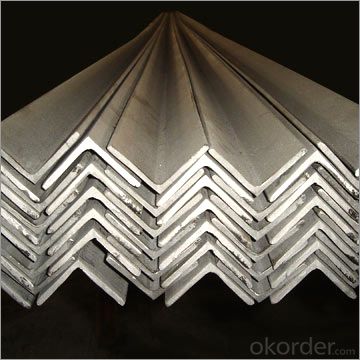
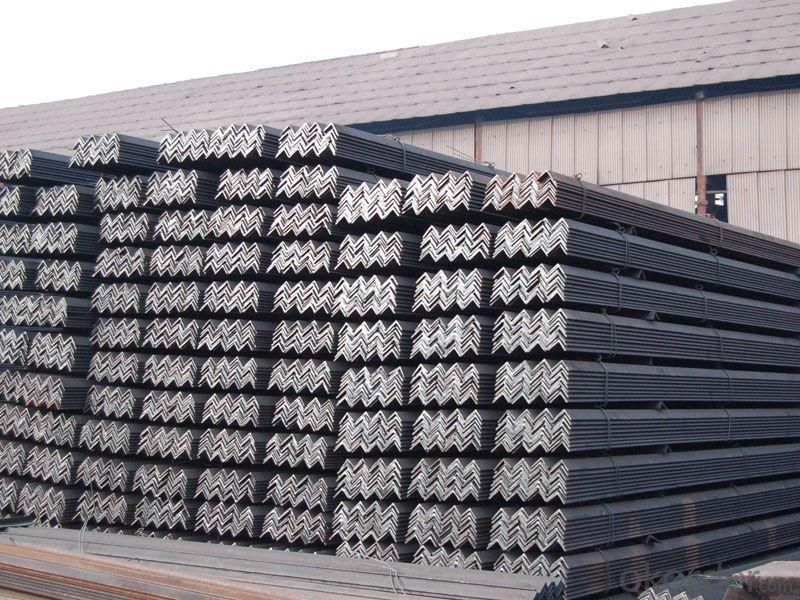
- Q: Reasons for opening holes on channel steel
- This machine is in stainless steel and flat iron, steel, steel, iron processing market are welcome and certainly very warm. Compared with traditional hand press and bench drill, have greatly breakthrough both in structure and performance. High speed hydraulic anti-theft net punching machine one day can punch 400-500 square security net, is currently the stainless steel tube and flat iron, flat steel, channel steel, angle iron punching processing fast equipment. The machine can be customized to a number of working positions, with simple disassembly, simple mold, durable, novice easy to use and so on. Die with the scale, convenient direct reading, free debugging red half hole or hole punched, smooth without burr, accurate positioning, can produce a variety of new anti-theft network (diamond anti-theft network, anti-theft network, plum garden square tube anti-theft network, can make door flower, guardrail, shelves, flat iron, steel, the channel, etc.) the use of punching angle. Is the most ideal processing equipment of stainless steel and flat iron, steel, steel, iron pipes and other processing households, profile processing businesses.
- Q: Are steel channels suitable for earthquake-prone regions?
- Steel channels are indeed suitable for earthquake-prone regions. Steel is known for its high strength and ductility, making it a popular choice for earthquake-resistant construction. Steel channels, in particular, offer several advantages in seismic regions. Firstly, steel channels possess excellent load-bearing capabilities, allowing them to withstand the forces generated during an earthquake. Their shape provides structural rigidity and stability, minimizing the risk of collapse or damage. Steel's inherent flexibility also enables it to absorb and dissipate seismic energy, reducing the impact on the overall structure. Additionally, steel channels can be easily customized and fabricated to meet specific building requirements. This adaptability allows engineers to design structures with appropriate seismic resistance, ensuring that they can withstand the expected ground motion. Steel channels' dimensional accuracy and uniformity also contribute to better construction quality and performance during earthquakes. Another advantage of steel channels is their fire resistance. Unlike other building materials, such as wood or concrete, steel does not burn or contribute to the spread of fire. This characteristic makes steel channels a safer choice for earthquake-prone regions, where fires can often occur due to ruptured gas lines or electrical failures during seismic events. Moreover, steel's durability and resistance to corrosion make it ideal for long-term use in earthquake-prone areas. Steel channels require minimal maintenance and have a longer lifespan compared to other materials, ensuring the continued safety and stability of structures over time. In conclusion, steel channels are highly suitable for earthquake-prone regions due to their strength, ductility, load-bearing capabilities, adaptability, fire resistance, and durability. These qualities make steel channels a reliable choice for constructing earthquake-resistant buildings that can withstand the forces generated by seismic events.
- Q: Are steel channels suitable for commercial construction projects?
- Yes, steel channels are suitable for commercial construction projects. They are widely used in the construction industry due to their high strength, durability, and versatility. Steel channels provide structural support, are resistant to fire and corrosion, and can be easily customized to meet specific project requirements. Additionally, steel channels offer cost-effective solutions for commercial construction, making them a popular choice among architects and builders.
- Q: Are steel channels suitable for railway infrastructure projects?
- Indeed, steel channels are a fitting choice for railway infrastructure projects. Their high strength and durability make them a common selection in such projects. Steel channels possess the ability to bear heavy loads and impart stability to the railway structure. Furthermore, steel channels exhibit remarkable resistance to corrosion and can endure harsh weather, rendering them perfect for outdoor usage. Moreover, the ease of fabrication and installation of steel channels aids in expediting the construction process. Ultimately, the incorporation of steel channels in railway infrastructure projects guarantees the safety and longevity of the railway system.
- Q: Can steel channels be used for creating overhead support structures?
- Yes, steel channels can be used for creating overhead support structures. Steel channels are commonly used in construction and engineering projects for their strength and durability. They provide excellent support and can be used to create beams, trusses, and frames for overhead structures such as bridges, walkways, and canopies. Steel channels have high load-bearing capacities and can withstand heavy weights and forces, making them suitable for creating reliable and long-lasting overhead support structures.
- Q: What is the difference between hot-rolled and cold-formed steel channels?
- Hot-rolled and cold-formed steel channels are two distinct manufacturing processes that result in different properties and characteristics of the final product. Hot-rolled steel channels are produced by heating a steel billet or slab above its recrystallization temperature and then passing it through a series of rollers to achieve the desired shape. This process allows for the formation of larger and thicker sections with a uniform grain structure. Hot-rolled channels tend to have rounded corners and a rougher surface texture. They are typically used in structural applications where strength and load-bearing capacity are essential, such as in the construction of buildings, bridges, and heavy machinery. On the other hand, cold-formed steel channels are created by bending or folding a flat steel sheet or strip at room temperature. This process involves passing the steel through a series of rollers or press brakes to achieve the desired shape. Unlike hot-rolled channels, cold-formed channels have sharp corners and a smoother surface finish. They are typically thinner and lighter than hot-rolled channels and are commonly used in applications that require precision, flexibility, and cost-effectiveness. Cold-formed channels are often utilized in the construction industry for framing systems, wall studs, and various architectural elements. In summary, the main differences between hot-rolled and cold-formed steel channels lie in their manufacturing processes, physical characteristics, and typical applications. Hot-rolled channels offer greater strength and load-bearing capacity, while cold-formed channels are more lightweight, precise, and cost-effective. The choice between the two depends on the specific requirements of the project and the desired properties of the channel.
- Q: Can steel channels be used in cold storage facilities?
- Yes, steel channels can be used in cold storage facilities. Steel is a strong and durable material that can withstand the low temperatures and provide structural support for the storage facility. It is commonly used in the construction of cold storage buildings due to its resistance to corrosion and ability to maintain stability in cold environments.
- Q: What are the common applications of steel channels?
- Steel channels are commonly used in various applications such as construction, manufacturing, and infrastructure projects. They are frequently utilized as structural components in building frames, support systems, and for reinforcing concrete structures. Steel channels also find application in the fabrication of machinery, vehicles, and equipment, where their high strength and durability are advantageous. Additionally, they are used in the electrical and telecommunications industries for cable management and support.
- Q: Specification for channel steels used in fork trucks
- Specifications are as follows:25a:250x78x7x1228a:280x82x7.5x12.530a:300x85x7.5x13.5
- Q: How do steel channels contribute to building aesthetics?
- Building aesthetics can be enhanced in several ways by incorporating steel channels. Firstly, these channels serve as structural elements, providing strength and stability to the overall structure. However, they also play a significant role in improving the visual appeal of a building. One of the primary ways steel channels contribute to building aesthetics is through their sleek and contemporary appearance. With their clean lines and smooth surface, steel channels can give a building a modern and sophisticated look. They can be utilized in a range of architectural designs, from industrial to minimalist, adding a touch of elegance and refinement to the overall aesthetic. Furthermore, steel channels offer great versatility in terms of design possibilities. Architects and designers can easily customize and fabricate them into various shapes and sizes, allowing for the creation of unique and visually striking elements. Steel channels can be employed as decorative features like handrails, balustrades, or window frames, thereby adding visual interest and architectural detailing to the building. Moreover, steel channels can be finished with different coatings or treatments to further enhance their aesthetic appeal. They can be painted in various colors to complement the overall design scheme or left exposed, showcasing the natural beauty of steel. Additionally, they can be polished or brushed to achieve different textures and finishes, thereby adding depth and character to the building's appearance. Furthermore, steel channels can contribute to the aesthetics of a building by creating a sense of openness and transparency. When used as structural elements in facades, they can support large glass panels, allowing for expansive views and the entry of natural light into the building. This creates a visually pleasing and inviting atmosphere, connecting the interior spaces with the surrounding environment. In conclusion, steel channels enhance building aesthetics by providing a sleek and contemporary appearance, offering design versatility, enabling customization, and creating a sense of openness. With their clean lines, smooth surface, and various finishing options, steel channels can elevate the visual appeal of a building, adding elegance, sophistication, and architectural detailing to the overall design.
Send your message to us
Steel JIS U Channel Or UPN Or GB U Channel
- Loading Port:
- Tianjin
- Payment Terms:
- TT OR LC
- Min Order Qty:
- 25 m.t.
- Supply Capability:
- 20000000 m.t./month
OKorder Service Pledge
OKorder Financial Service
Similar products
Hot products
Hot Searches
Related keywords
